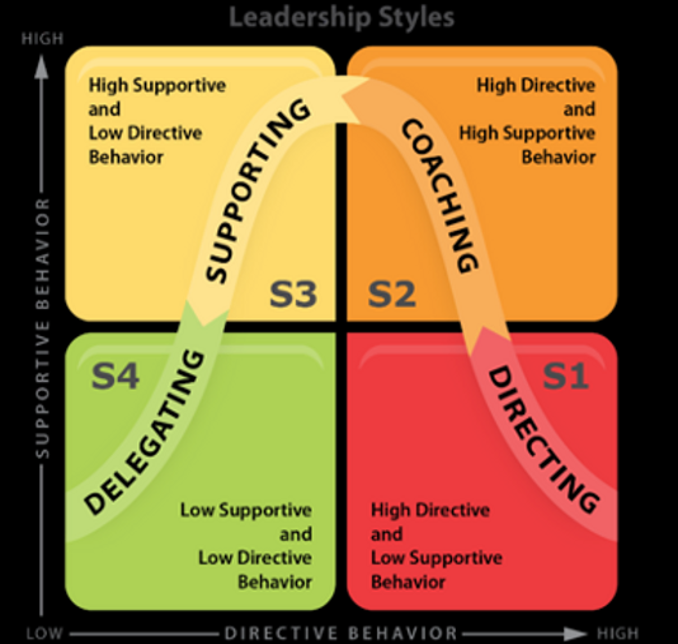 People love to talk about their leadership style.
People love to talk about their leadership style.
“I’m a visionary.”
“I’m hands on.”
“I like to empower people and get out their way.”
None of these are necessarily bad ideas. However, when it comes to leading a team . . .
It’s not about you. It’s about what your team needs.
This is where the classic, though not used enough, Situational Leadership approach comes in.
This approach says that you need to assess each person on your team, and the particular tasks they have to work on, in order to figure out how to lead them.
In some situations, you need to be Highly Directive and in others, use Low Directive behaviors.
In some situations, you need to provide be Highly Supportive and in others, use Low Supportive behaviors.
Here is an example.
Imagine a new employee who is excited about the job, but does not really know the work. You need to be Directive with this person – show them just how the job needs to be done: Highly Directive and Low Supportive. Note: this does not mean you are not supportive at all, you are just mostly Directive.
In time, the new person will start getting the hang of things and you can provide Coaching. You continue to be Highly Directive, but are now also Highly Supportive – “Hey, Rob, you are really getting the hang of this.” But you are still monitoring closely.
After a while longer, they will understand the tasks and you are now all about building their confidence by being Supportive. So, Low Directive behavior and Highly Supportive.
Finally, the new person has lots of confidence and knows the job. You can now use the Delegating: Low Directive and Low Supportive behaviors. This does not mean that you ignore them! Give them their “kudos” regularly and remind them (and everyone) of the vision, mission, and their role in it.
But don’t be “hands on!” Can you imagine how annoying that is for someone who knows what they are doing? (I can hear some of you saying “I don’t need to imagine.”)
What’s the right leadership style? It depends on what your team needs. Become adept at figuring this out and then providing the right style at the right time. That’s the way to maximize your team Mission Impact.